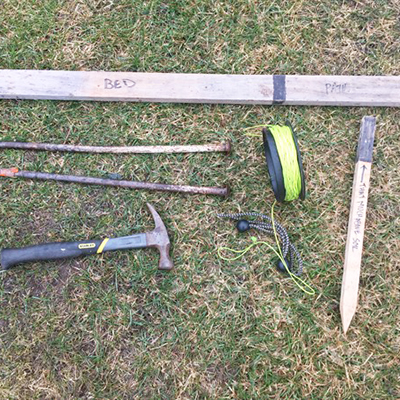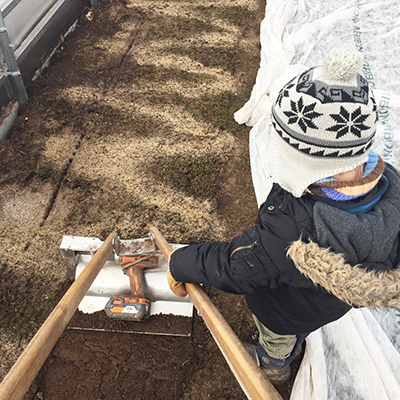By Jean-Martin Fortier
Over the last three years, I’ve been involved with a new experimental farm in my province of Quebec. At my farm, La Ferme de Quatre Temps, I was asked to design and create a training farm where some of the strategies described in my book The Market Gardener could be expanded upon and scaled up. A big part of the mission was to find ways to increase efficiency for the small-scale market garden. Here is a list of five new tools that have changed the way I farm.
Bio-Discs from Terrateck
Terrateck is a French company that has been developing awesome market gardening tools that I’ve been trialing for a couple of years now. Although the tools are expensive, I’m a big fan of the quality and usefulness of most of the products they develop. It’s definitely worth checking them out.
Number one on my list is their double-wheel hoe mounted with the Bio-Discs. It’s an ergonomically designed wheel hoe developed to straddle the crop, and it comes with a clever tool bar system that allows you to easily change different cultivating attachments. I’ve tried all of them (the full range is available on the Johnny’s Seeds website), but the one I like the most is the Bio-Disc.
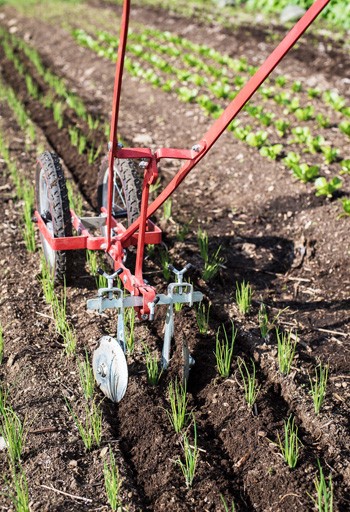
The disc will mound up roughly two inches of soil on both sides of a planted row, cultivating two rows in one pass, while also burying small weeds that might have emerged on the row. The capacity to cultivate both between and on the rows in one quick pass speeds up our cultivating chores immensely: what used to be done with stirrup hoes, now gets done ten times faster.
The Bio-Disc comes with two straight discs that help both to manage the depth at which the curved discs work and to advance in a straight line. This feature works well on sandy soil. If you’re working with stony or clay soils, I recommend removing the straight discs, as they are more cumbersome than useful in these conditions. For carrots, beets and other closely spaced crops (four to six rows on a 30-inch bed), this tool works very well, but you need to cultivate early - from the first appearing leaves up to two inches. The Bio-Disc can also be used for hilling more mature crops like beans, onions, and leeks, which can be covered with soil once they’ve reached five inches.
One possible option to consider is adding the finger weeder attachment to the strategy, using the weeder to break up the previously mounded soil. You do this five to ten days after your initial pass with the Bio-Disc, when new emerging weeds have started to sprout on your hilled rows. The finger weeders break up the soil, leaving no chance for broadleaf weeds to establish themselves. We’ve just started to play around with such strategies, which mimic what mechanized growers do with a cultivating tractor. Having a customizable toolbar that offers such a range of possibilities for the market gardener makes this new tool a unique and valuable one.
Flex-tine weeder
Another game changer on the farm has been a neat 30-inch tine weeder made by Two Bad Cats, a small Vermont company that makes market gardening tools. This is a handheld version of the tine weeder that mechanized growers happily use in their fields. The tool consists of a light frame made out of two rows of staggered tines lined up at one and a half inches apart.
When pulled, the spring tines vibrate their way through the upper layer of the soil, scratching the surface and destroying the small emerging weeds but bouncing away from sturdier more established crops. Young seedlings that are well rooted will survive the hit from the tines, but the smaller weeds won’t - it’s that simple. The tool covers an entire 30-inch bed in one pass, which makes it extremely flexible for a variety of row crops, regardless of the spacing.
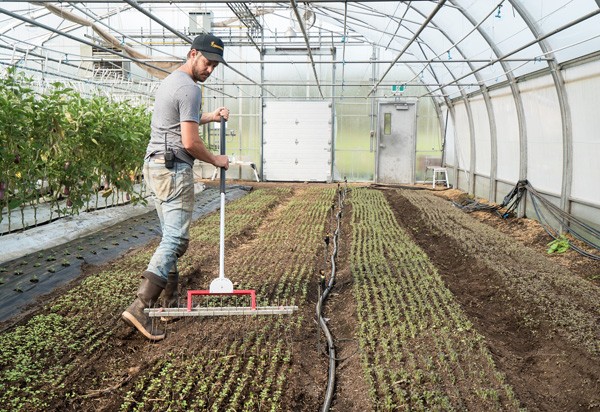
I mostly rely on the tine weeder for densely seeded crops such as arugula, radishes, turnips and other greens that are spaced at six to twelve rows on 30-inch beds. These are crops that are normally either impossible to cultivate or require a lot of time to weed effectively. For all of the crops above, two quick passes at the right moment will considerably diminish the weed presence. It doesn’t eliminate them all, but it brings down the pressure a great deal.
In my experience, the tine weeder can be used in clay or sandy soils for as long as weeds are in the white-thread or cotyledon stage. Once weeds have rooted, the tool becomes relatively ineffective. To make sure we use it at the right time, we’ve adjusted our seeding schedule, marking our calendar to systematically use the tool one week after transplanting, and two weeks after direct seeded crops. To enhance the results further, we make another pass (or two) the following week. This process also helps to disturb any hard surface crust that might develop on the soil, improving surface drainage - another favorable outcome. All and all, we use it about one hour a week in the garden, but it certainly saves four to five hours, making it number two on my list.
Crop planning software
Many bigger farms already use software for their crop planning, but I know that many of us smaller scale farms don’t. So, anyone that takes the time to look up what this California company has come up with will be absolutely blown away. Tend fully integrates all the aspects of crop planning; from establishing field blocks, to making calendars to planning yields and outcomes. The software is capable of generating revenue and profit predictions, can track sales and allows you to manage daily operations seamlessly. All in a super slick and friendly interface.
A quick visit to their website (tend.ag) will let you see more of the features, like building websites and creating online offer sheets for customers. It’s really incredible to have all these services synced on one farm management platform.
Up until now, I’ve mostly relied on homemade systems and Excel spreadsheets that I’ve customized for my own goals and strategies. I’ve been reluctant to change, because I’ve come to rely on these systems, which have worked so well for me over the years. Now that I run a bigger crew, I was looking for a way to optimize record keeping and data management. When I saw that with Tend I could break down the costs of farm labor and track the time it takes for every task, I decided to jump onboard.
I’ve only been using it for a few months, but already I see how it’s an important turning point for my farm. It reminds me of my first farming years; when we finally got a dishwasher to clean the dishes of the crew... talk about a crunch point!
Tend will launch officially in January of 2018, but myself and a bunch of other growers have been trialing the beta version and advising the Tend team on features, utility and more. My understanding is that it will cost under $200 a year: definitely worth it.
The Bubbler
I first came across “The Bubbler” some years ago while visiting Sandy and Paul Arnold (famous for their winter greens production here in the Northeast). Their washing station was the cleanest and most efficient I had ever seen. The cornerstone of the station was a big tank filled with water that bubbled like a Jacuzzi, washing a huge amount of greens in only a few minutes.
The Bubbler is simply a big tub (ours is a 5000 gallon milk tank) lined with perforated PVC pipes connected to a Jacuzzi pump. When turned on, the water in the tank gets agitated, mixing the greens and removing dirt and debris. The big novelty here is that we’re able to forgo the double or triple washing that we previously did to get our mesclun mix crispy and clean. The Bubbler allows us to streamline our process, letting us wash, dry and bag up to 100 pounds per hour - twice as fast as before.
To accompany the Bubbler we also rely on a neat hack from Michael Kilpatrick that transforms an everyday washing machine into an effective greens drying machine. Friend of the Arnolds and former farmer Michael Kilpatrick helped me with our design and set-up and has put a complete tutorial on how to create your own washing station online. The quality of the information he shares is well worth what he charges for it. Referrals and a video of the bubbler in action are on my web site.
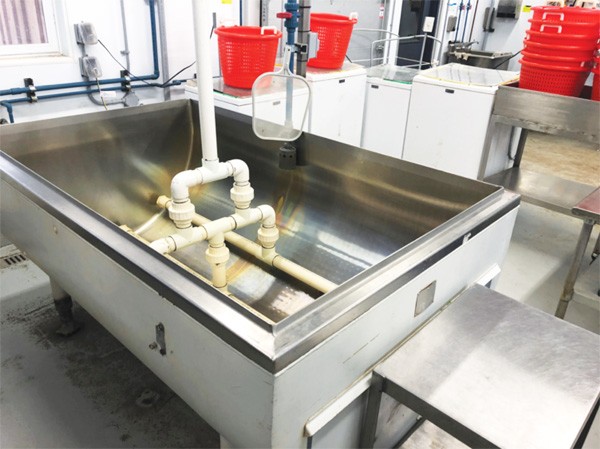
A few other tools…
Stopping at 5 is no fun. So here is a short list of a few more tools and devices that are essential to our systems at the Ferme des Quatre Temps.
Jang three-row seeder
The Jang seeders are not new and many growers appreciate the consistency and accuracy they provide. I’m not sure I’ll see a better seeder for many years. However, I haven’t heard of many people who have jumped onto the new Jang 3-row seeder. Perhaps the price difference deters some growers, or maybe it doesn’t fit in their contexts, but for intensive cropping systems on 30-inch beds, it’s really awesome.
In our planting schedule, crops like carrots, turnips and radishes are direct seeded at six rows per bed. Because generations of these crops are sown every week, the time saved by passing the seeder twice instead of six times makes a huge difference. Six rows per bed is more than I would have previously done, but by adjusting the singular width and using a different roller, the overall yields are better, and the job gets done three times faster.
Rinaldi R2 power harrow
For more than a decade, I’ve been using and advocating for power harrows as great alternatives to rototillers, which inevitably destroy soil structure. One of the few drawbacks of the power harrow was the weight it puts on the walk-behind tractor. I’ve used (and abused) many different models of the power harrow, but last year, this Italian company stepped it up a notch and made some significant changes to their original models. It’s now lighter, more compact, and just as tough. If you’re thinking of upgrading to a more versatile harrow, or purchasing one for the first time, the R2 by Rinaldi is worth a good look.
The Terrateck paper pot transplanter
The paper pot transplanter is not new to growers and I’ve used it myself a number of times over the past few years (see Farming lean with paper pots in the Nov/Dec 2017 issue of GFM). Due to acetone contained in the glue of the paper, organic certifiers in Canada have ruled it out, so I haven’t been able to use it as much as I’d like to. My hope is that some company will take on the challenge and business opportunity to make paper pots that don’t contain nasty chemicals, because the need for a tool like the paper pot transplanter on small organic farms is real. If you haven’t seen it in action, Google it and behold… It saves A LOT of time transplanting, as well as your back.
JM Fortier is an organic farmer and author of The Market Gardener, a successful grower’s handbook for small-scale farming. Besides farming full time, JM now teaches an online course to a select group of students year round. Visit www.themarketgardener.com.



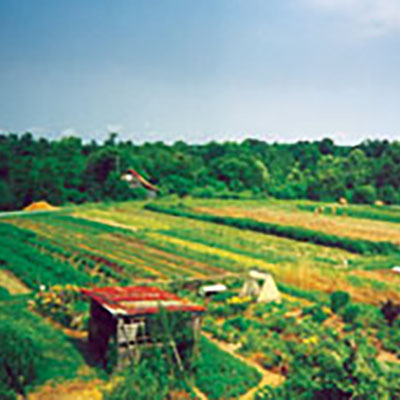
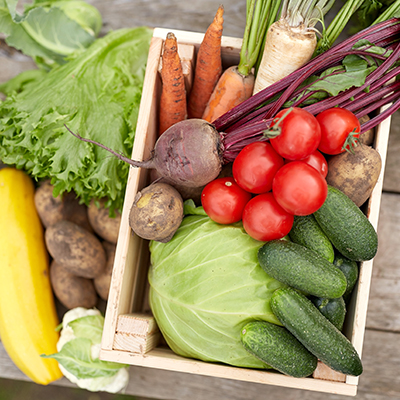
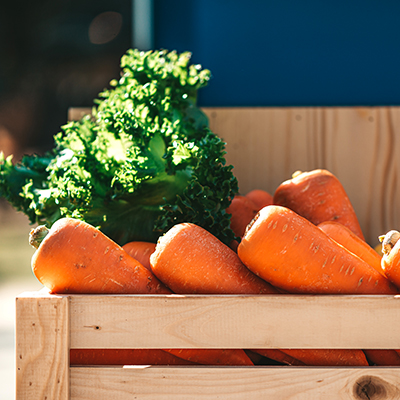
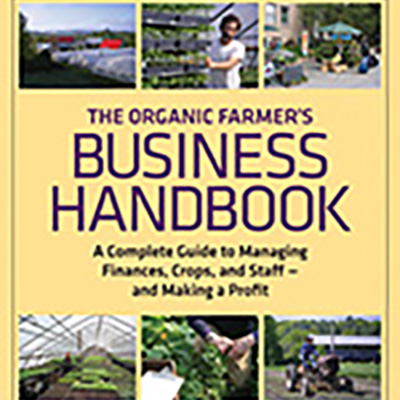
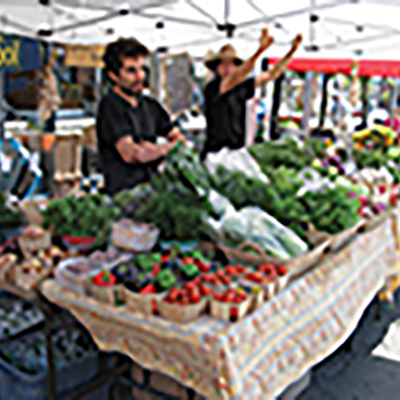
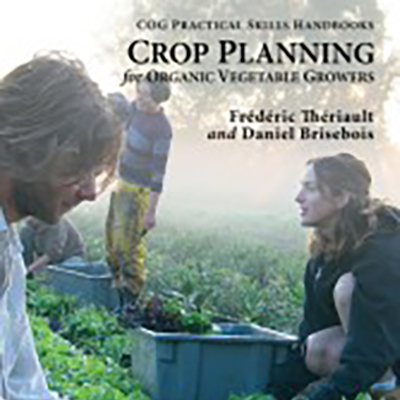
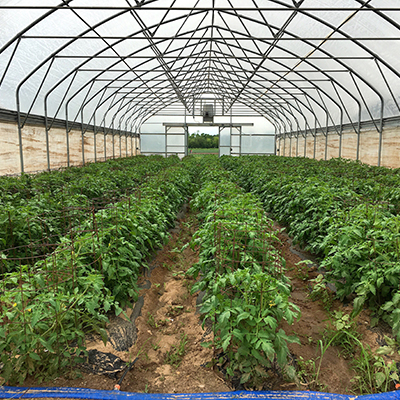
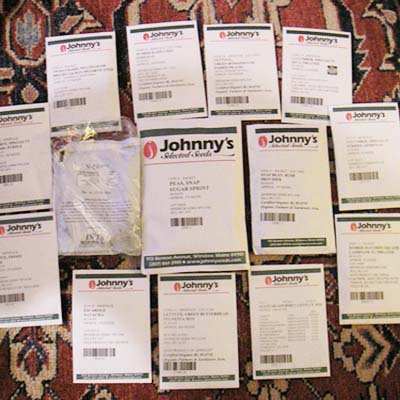
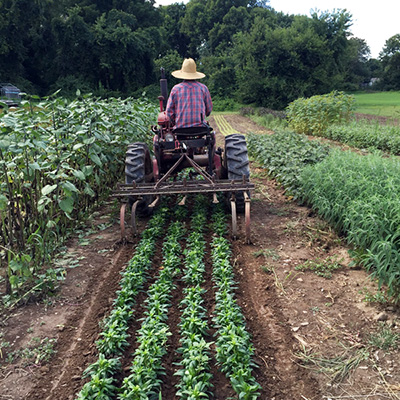

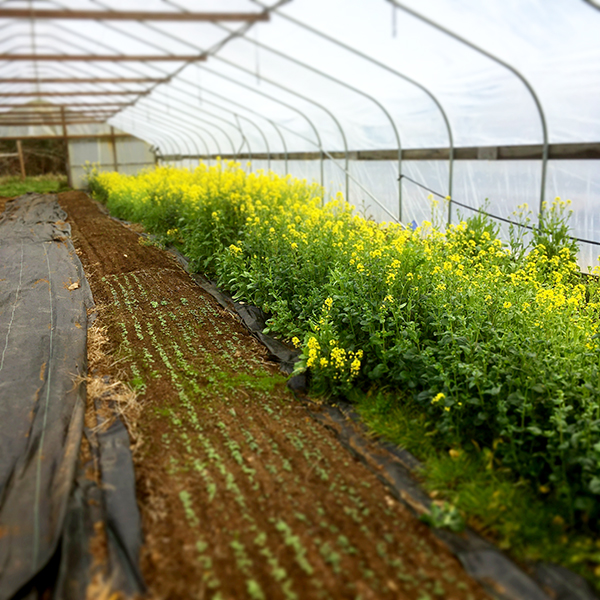 If you’ve been a subscriber to Growing For Market (or even if you haven’t), you’re probably familiar with the many advantages of no-till agriculture. No-till methods can reduce a farm’s carbon footprint, promote complex soil biology, and preserve and build organic matter.
If you’ve been a subscriber to Growing For Market (or even if you haven’t), you’re probably familiar with the many advantages of no-till agriculture. No-till methods can reduce a farm’s carbon footprint, promote complex soil biology, and preserve and build organic matter.
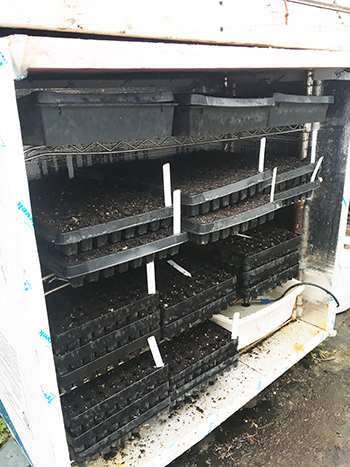 Until two years ago I was germinating all seedlings in greenhouses using almost exclusively bottom heat from electric heat mats. At my current farm we only had space for about 8-10 trays on our two mats and we definitely noticed differences in the germination (and presumably the heat the mats were providing) on the edges of our trays.
Until two years ago I was germinating all seedlings in greenhouses using almost exclusively bottom heat from electric heat mats. At my current farm we only had space for about 8-10 trays on our two mats and we definitely noticed differences in the germination (and presumably the heat the mats were providing) on the edges of our trays.